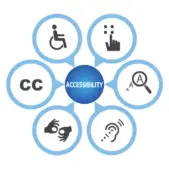Customer experience (CX) is a front-and-center issue for businesses seeking to build and hold a competitive advantage. To deliver the best possible CX, businesses need deep and accurate insights into how their customers think. Buyer personas are one of the most effective tools for building empathy and creating a better understanding of customer needs.
Buyer personas, also known as customer personas, offer businesses an effective vehicle for crafting bespoke service models and on-point messaging. They give clarity and purpose to customer experience strategies, helping businesses better understand their customers and position their products and services to meet their needs. This, in turn, can lead to a more satisfying consumer experience—one that’s much more likely to generate repeat business and loyalty.
This guide to buyer personas explains the role personas play in marketing and how to create effective personas to support a personalized customer experience. It also highlights tools businesses can use to track the impacts of their persona development strategies on sustainable business and revenue growth.

The Role of the Buyer Persona in Customer Experience
Quantitative data guides businesses to a better understanding of critical trends, metrics, and consumer behaviors. But it doesn’t tell the full story. Qualitative factors—those that rely on context and non-numeric descriptors—are equally important. They can be even more important in marketing as they cover the intangible, emotion-driven reasons customers prefer a particular business over a competitor.
Buyer personas provide a structured framework to decipher the qualitative data obtained through research, offering a clearer understanding of customer segments and their preferences, behaviors, and motivations. They help businesses build empathy for the actual people in their target market, and as a result, businesses can take a more precise and effective approach to customer experience strategy development.
What’s more, buyer personas help businesses develop products and services that respond directly to their customers’ needs. They can also underpin marketing efforts, especially with respect to:
- Content development and marketing messaging
- Lead generation
- Customer acquisition
- Customer retention
Personas elevate a business’s CX impact when leveraged correctly by creating a more engaging and personalized customer experience. This, in turn, improves customer satisfaction, leads to better word of mouth, and supports long-term consumer loyalty.
Creating Effective Buyer Personas
Buyer personas should represent broad cross-sections of the actual people in your target demographic categories. Businesses can create multiple personas to represent varying demographic groups, with each individual example profiling elements such as:
- A brief biographical profile
- Personality traits
- Motivations, goals, frustrations, and pain points with respect to their engagement with your business
Creating effective buyer personas involves deep, targeted research into your customers’ demographic details, spending habits, lifestyle, and personal interests. It also demands a detailed understanding of the pain points motivating customers to seek out your business’s products or services.
UpTop Perspective
When trying to decide which comes first between interviews and personas, a modest amount of interviews first will help inspire and shape questions to ask in your surveys making the insights more pertinent in the end.
Let’s explore some of the tools you can use to develop buyer personas.

Customer Interviews
One-on-one conversations with customers in your targeted demographic groups can yield highly relevant insights. For best results, consider the following strategies:
- Aim to conduct interviews with a modest number of customers so you can harvest a broad cross-section of perspectives without overwhelming researchers.
- Use open-ended questions that let participants voice their expectations and provide insights into their consumer journey-related goals and pain points.
- Strive to extract emotion-driven and subjective insights that humanize your quantitative data and its analysis.
Customer Surveys
Surveys enable businesses to draw data-driven insights from a larger sample of their audience. This can be a cost-effective way to identify trends in customer behavior and preferences and prevent buyer personas from becoming skewed by outlying data points.
Conducting customer interviews beforehand can be beneficial as they provide the context needed to design more relevant and targeted survey questions. Upon collecting your survey data, you can then perform advanced statistical analyses using techniques such as hierarchical clustering to create discrete customer groupings based on similar responses. Buyer personas often suggest themselves organically from there.
Internal Research
Supplement customer interviews and surveys with internal research that engages the expertise of existing team members. Discuss your CX strategy research efforts with sales teams, customer service representatives, and marketers to build additional insights into common objectives and pain points. Doing so also enables you to cross-reference your interview and survey data with information gained from adjunct research efforts.
Personalizing CX Strategies With Buyer Personas
Once you’ve built a complete set of buyer personas, your next step will focus on applying them to customer journey mapping. At this stage, your objective is to use your personas to improve the customer experience across the various stages and interactional touchpoints they have with the business.
Some of the questions you should strive to answer include:
- Is the actual customer journey accurately reflected in the personas you created?
- What specific objectives do customers have at each touchpoint in the buying journey?
- What obstacles do customers encounter at each of these touchpoints, and what emotions do they elicit?
Your answers to these questions will help you create a personalized customer experience, which you can further tailor to customers across your segmentation areas. In each case, your goal is to eliminate friction in the customer experience and build a smooth, seamless journey that aligns with your broader organizational goals.

How to Measure the Impact of Your Buyer Persona
As you import your buyer personas into your marketing efforts, measuring the impacts of your CX research becomes necessary. This broadly involves analyzing key performance indicators (KPIs) such as:
- Conversion rates
- Customer satisfaction rates
- Retention rates
- Customer lifetime value
Additional metrics include net promoter scores and customer effort scores. These data points assess customer loyalty to your business and the amount of effort customers must go to when interacting with it. Lower levels of effort generally correspond to higher levels of satisfaction and increased loyalty.
UpTop Perspective
Buyer personas and their specific journeys should be revisited on a regular basis to see if there are any behavioral changes or considerations that may impact your digital experience and ultimately your overall KPIs.
UpTop Helps Businesses Build a Better Customer Experience
CX has emerged as one of the most important tools businesses use to differentiate themselves from competitors and to gain and hold a competitive advantage. Buyer personas are a critical pillar in building the kind of comprehensive CX strategy that delivers a superior buying experience.
Businesses that provide a better customer experience win, retain more business, and become more profitable in the long run.
We have deep cross-industry experience in helping businesses develop and deliver a superior buyer experience. Investing in a better CX can pay dividends in the form of increased loyalty, higher rates of repeat business, and organic growth through positive word of mouth. Contact us today to discuss your unique needs for a better customer experience.


